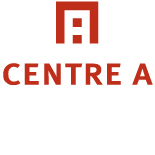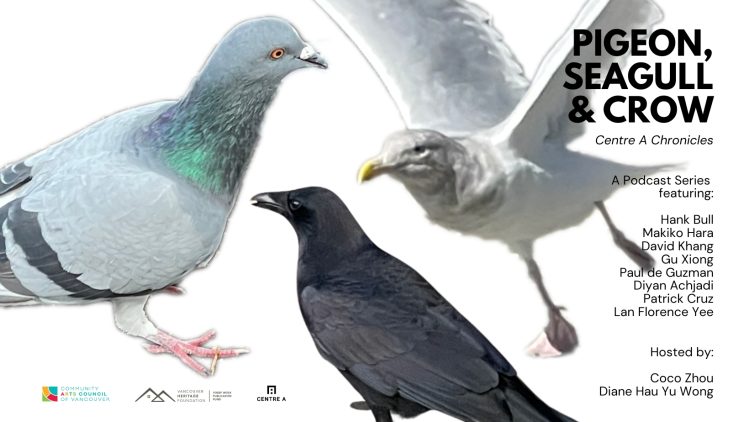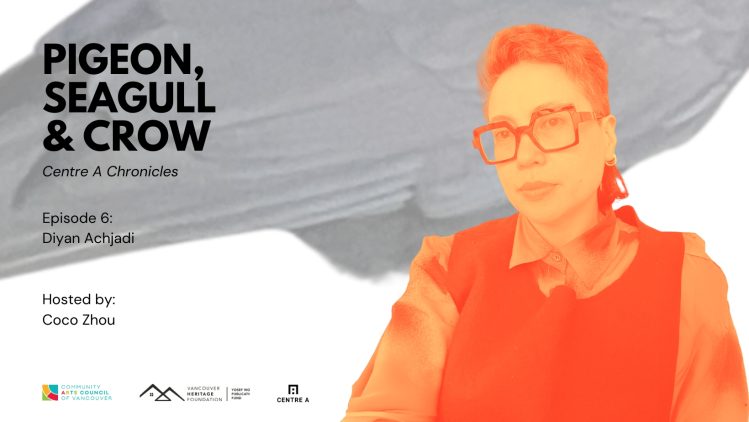Centre A is pleased to launch our inaugural podcast series, Pigeon, Seagull & Crow: Centre A Chronicles.
The series explores different pivotal points in our 25 years as an arts and culture institution, featuring 8 artists and curators with a wide range of practices that the organization has worked with since our inception in 1999: Hank Bull, Makiko Hara, David Khang, Gu Xiong, Paul de Guzman, Diyan Achjadi, Patrick Cruz and Lan “Florence” Yee. During these conversations, we focus not only on the practices of the selected artists, but also Centre A’s role within the evolving contemporary art scene in Vancouver and Canada, touching on topics such as community organizing in Chinatown, intergenerational connection, migration experiences and the changing cultural landscape within the Asian-Canadian sphere.
–
Listen now on Spotify or Apple Podcast, through the links below:
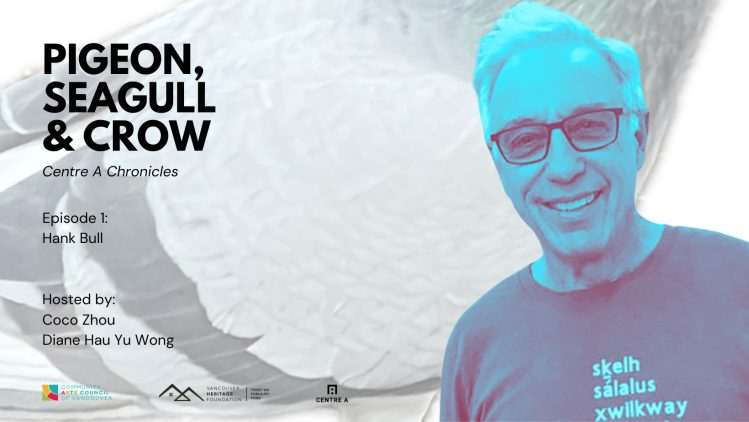 Episode 1: Hank Bull
Episode 1: Hank Bull
Hank Bull was born at Moh’kins’tsis, Calgary and lives in Vancouver, on the traditional and unceded territory of the xwm??kw?y??m Musqueam, Sk?wx?wu?7mesh Squamish and Tsleil-Waututh Nations. His work combines various media, including painting, sculpture, photography, performance, music, video, publishing and curating. He has contributed to the development of artist-directed economies of exchange and produced numerous international projects. He was a co-founder of Centre A in 1999, where he continued in the role of executive director until 2010. During this time, he was responsible for the production of over 100 exhibitions, performances, and symposia, and supported the careers of such curators as Steven Tong, Sadira Rodrigues, Joni Low, Alice Ming Wai Jim and Makiko Hara.
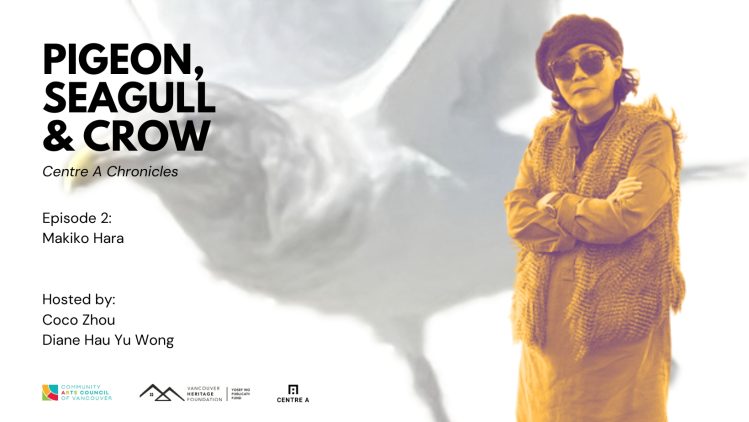
Episode 2: Makiko Hara
Makiko Hara is an independent curator, lecturer, writer, and art and cultural consultant based in Vancouver, BC. She received The Alvin Balkind Curator’s Prize in 2020. From 2007 to 2013, she was the Chief curator / deputy Director of Centre A —Vancouver International Centre for Contemporary Asian Art. She has worked with many visual artists on a variety of international projects as an independent curator, including: ScotiaBank Nuit Blanche, (Toronto, Canada, 2009), AIR YONAGO, Tottori Geijyu Art Festival (Yonago, Japan, 2014-15), Fictive Communities Asia-Koganecho Bazaar (Yokohama, Japan, 2014), Rock Paper Scissors, and Cindy Mochizuki, (Yonago City Museum of Art, Tottori, Japan, 2018). Hara was appointed to the Advisory director of the International Exchange Center, Akita University of Arts, Akita, Japan in 2017-2020. She is a co-founder of Pacific Crossings, BC based curatorial platform since 2018 that has initiated and organized numerous conversations, residency and online /offline cultural exchange across the pacific. Hara founded My Kitchen Anthropology Museum in 2020 in response to the Covid 19 Pandemic lockdown, and held Hank Bull and Marcia Crosby solo exhibitions. Recently she was a guest curator for Vancouver Art Gallery’s Offsite and curated Lani Maestro (2022-23) and Pedro Reyes (2023-24).
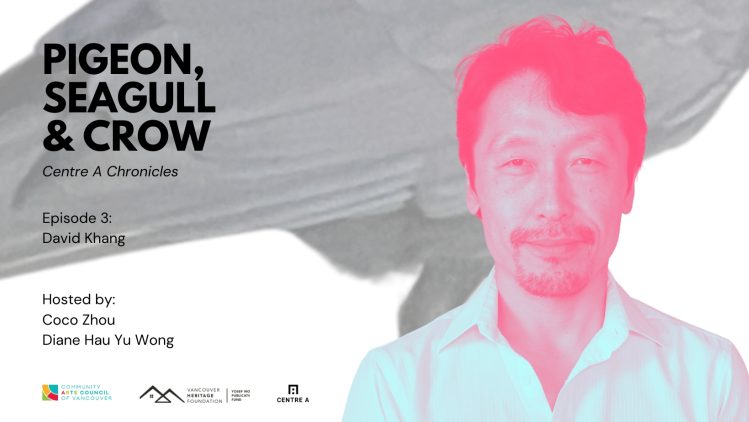
Episode 3: David Khang
David Khang holds a BFA from Emily Carr Institute of Art & Design and MFA with Critical Theory Emphasis from UC Irvine. From 2005 – 2015, Khang taught at ECUAD and Goddard College, before pursuing legal education. Informed by education in psychology, theology, dentistry and law, Khang’s practice selectively borrows from these disciplinary codes to compose interdisciplinary languages in visual, textual, and spoken forms. By performing with his body in time-based installations, he interrogates social constructions of race, gender and interspecies relations to re-imagine their poetics and politics.
Khang was born in Seoul, and lives on ancestral, unceded, and unsurrendered territories of the Musqueam, Tsleil-Waututh and Squamish, where he divides his time between art, dentistry and law.
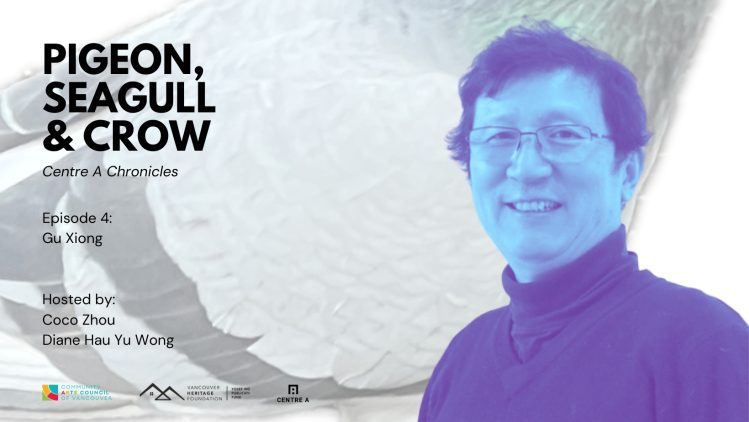
Episode 4: Gu Xiong
A professor at UBC’s Department of Art History, Visual Art and Theory, Gu works with installation, painting, drawing, printmaking, sculpture, digital media and performance art. He has exhibited nationally and internationally, including more than sixty solo exhibitions and over one hundred group exhibitions. His works are in the collections of the National Gallery of Canada, the China National Museum of Fine Arts and the Vancouver Art Gallery, among many other institutions and collections.
Gu’s practice centres on the creation of a hybrid identity arising from the integration of different cultural origins. Through the critical angle of visual art, his work encompasses the dynamics of migration, invisible labor, globalization, local culture, and seeks to create an entirely new identity.
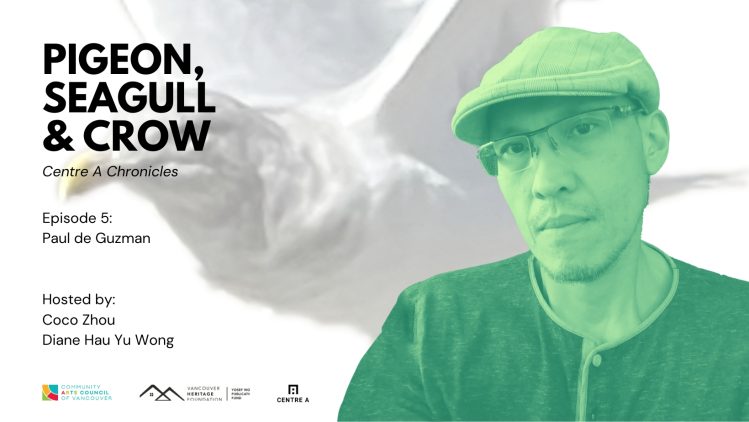
Episode 5: Paul de Guzman
Born in Manila, where he studied Engineering, de Guzman immigrated to Vancouver in 1984. His artistic practice is governed by nomadic gestures and transient objects, characterized by a concept-driven approach across a variety of media. An important outcome of his current artistic investigation recognizes the role of language, architecture and urbanism as mechanisms for social control through the lens of social engagement and post-colonialism. De Guzman has shared his work widely at conventional white cube venues, but is fond of the unconventional ones.
In 2010, de Guzman founded a virtual and itinerant museum called MAA – Museum for the Administration of Aesthetics, a research-based nomadic entity that documents our experiences of the urban environment through art and social engagement. Using relational and documentary strategies, MAA employs various methods to present an archive of social experiences and ideas pertaining to art, urbanism and personal pedagogy. MAA’s most recent iteration is the Youtube channel “Paul de Guzman presents … Art”, which engages through multiple levels of artistic, pedestrian and critical dialogue.
Episode 6: Diyan Achjadi
Diyan Achjadi (they/she) is a Vancouver-based artist who explores the ways that surface ornamentation and illustrated printed matter can function as archives documenting the circulation of ideas in visual form. Born in Jakarta, Indonesia, their formative years were spent moving between multiple educational, political, and cultural systems. Through drawing, printmaking and animation, they use modes of fiction and storytelling to examine interrelated and conflicting histories of place.
Achjadi is a Professor in the Audain Faculty of Art and currently serving as Interim Vice-President Academic at Emily Carr University of Art and Design. They received a BFA from the Cooper Union and an MFA from Concordia University. They have exhibited widely at galleries and film festivals across Canada and beyond; recent exhibitions include Stories for Futures, Real and Imagined (2024); Godzilla: Echoes from the 1990s Asian American Arts Network (2024); “Between Line and Thread: Connecting the Asian American Arts Centre Collection”(2023); Carried Through The Water (2022). They were a recipient of the VIVA Award from the Jack and Doris Shadbolt Foundation in 2021.
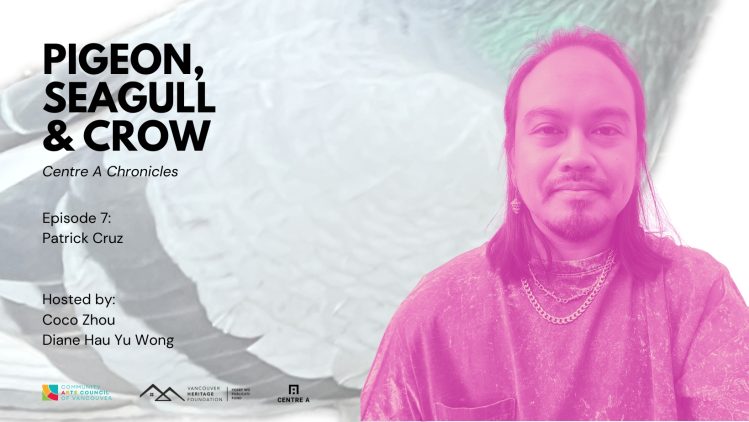
Episode 7: Patrick Cruz
Patrick Cruz creates installations that draw on aspects of diasporic experience, play and folk spirituality. He received the prestigious Thirteen Artist Award from the Cultural Center of the Philippines in 2021, was long-listed for the Sobey Art Award in 2019 and won the RBC Canadian Painting Competition in 2015. Cruz is co-founder of two curatorial collectives. The Kamias Collective along with Toronto based curators Su-Ying Lee and Karie Liao and most recently Ben Flores Fan Club Collective with Vancouver based artist Christian Vistan. Cruz is a cross appointed Assistant Professor in Studio Art at the Arts, Culture and Media department at the University of Toronto Scarborough and the Master of Visual Studies at Daniels Faculty of Architecture, Landscape, and Design.
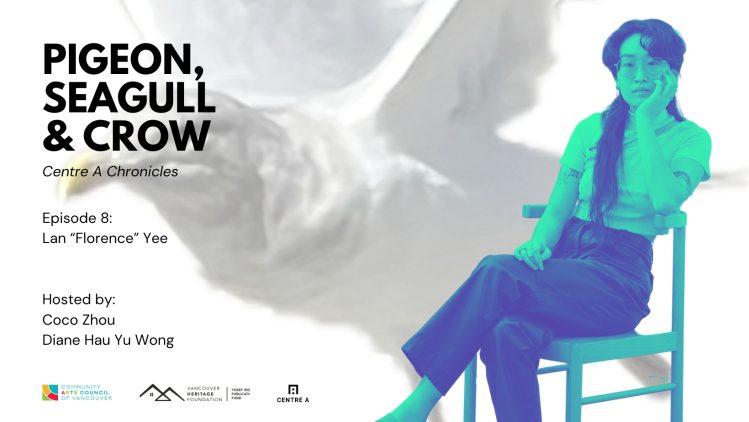
Episode 8: Lan “Florence” Yee
coming soon
Lan “Florence” Yee is a visual artist and cultural worker based in Tkaronto/Toronto & Tiohtià:ke/Mooniyang/Montreal. They collect text in underappreciated places and ferment it until it is too suspicious to ignore. Lan’s work has been exhibited at the Darling Foundry (2022), the Toronto Museum of Contemporary Art (2021), the Art Gallery of Ontario (2020), the Textile Museum of Canada (2020), and the Gardiner Museum (2019), among others. They co-founded the Institute of Institutional Critique with Mattia Zylak in 2019 and the Chinatown Biennial with Arezu Salamzadeh in 2020. They obtained a BFA from Concordia University and an MFA from OCAD U. Lan has been awarded grants from the Canada Council for the Arts, the Ontario Council for the Arts, and the Toronto Arts Council. They are a recipient of the William and Meredith Saunderson Prizes for Emerging Artists (2023).
–
This project is generously supported the Community Arts Council of Vancouver and the Vancouver Heritage Foundation.
![]()
![]()





